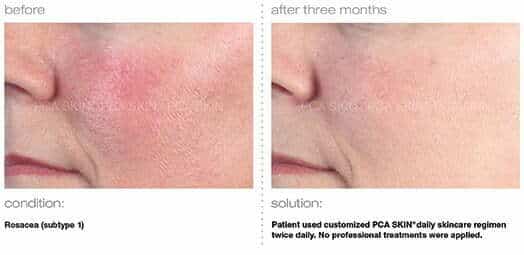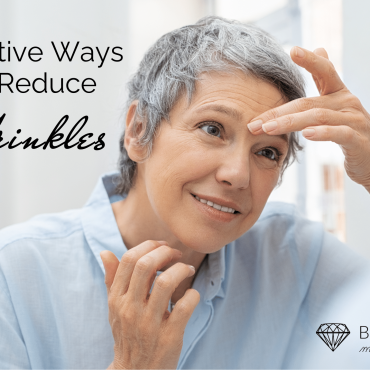Esthetician Talks about Rosacea and PCA Products for Rosacea
Rosacea (rose-AY-sha) is a common skin disease. It often begins with a tendency to blush or flush more easily than other people.
The redness can slowly spread beyond the nose and cheeks to the forehead and chin. Even the ears, chest, and back can be red all the time.
Rosacea can cause more than redness. There are so many signs and symptoms that rosacea has four subtypes:
- Erythematotelangiectatic rosacea: Redness, flushing, visible blood vessels.
- Papulopustular rosacea: Redness, swelling, and acne-like breakouts.
- Phymatous rosacea: Skin thickens and has a bumpy texture.
- Ocular rosacea: Eyes red and irritated, eyelids can be swollen, and person may have what looks like a sty.
With time, people who have rosacea often see permanent redness in the center of their face.
Famous faces of rosacea
If you are living with rosacea, you are in good company. Some famous people have struggled with rosacea:
- Bill Clinton
- Diana, Princess of Wales
- W.C. Fields (a film star in the 1920s and 1930s)
We carry PCA skin products that have special combination of ingredients for calming the skin and reducing redness in the skin. As well as for reducing redness in sensitive skin types.

We also recommend Sensi Peel treatments for certain Rosacea cases.
Who gets rosacea?
Rosacea is common. According to the U.S. government, more than 14 million people are living with rosacea. Most people who get rosacea are:
- Between 30 and 50 years of age
- Fair-skinned, and often have blonde hair and blue eyes
- From Celtic or Scandinavian ancestry
- Likely to have someone in their family tree with rosacea or severe acne
- Likely to have had lots of acne — or acne cysts and/or nodules
Women are a bit more likely than men to get rosacea. Women, however, are not as likely as men to get severe rosacea. Some people are more likely to get rosacea, but anyone can get this skin disease. People of all colors get rosacea. Children get rosacea.
What causes rosacea?
Scientists are still trying to find out what causes rosacea. By studying rosacea, scientists have found some important clues:
- Rosacea runs in families. Many people who get rosacea have family members who have rosacea. It is possible that people inherit genes for rosacea.
- The immune system may play a role. Scientists found that most people with acne-like rosacea react to a bacterium (singular for bacteria) called bacillus oleronius. This reaction causes their immune system to overreact. Scientists still do not know whether this can cause rosacea.
- A bug that causes infections in the intestines may play a role. This bug, H pylori, is common in people who have rosacea. Scientists cannot prove that H pylori can cause rosacea. Many people who do not have rosacea have an H pyloriinfection.
- A mite that lives on everyone’s skin, demodex, may play a role. This mite likes to live on the nose and cheeks, and this is where rosacea often appears. Many studies found that people with rosacea have large numbers of this mite on their skin. The problem is some people who do not have rosacea also have large numbers of this mite on their skin.
- A protein that normally protects the skin from infection, cathelicidin, may cause the redness and swelling. How the body processes this protein may determine whether a person gets rosacea.
Recommended Products for Rosacea
Anti-Redness Serum
Hydrating Toner
Dry Skin Relief Bar®
Collagen Hydrator
Brilliant Massage & Skin,
Burlington, Vermont


